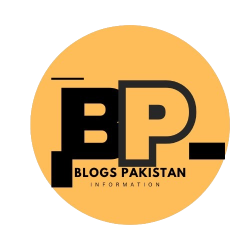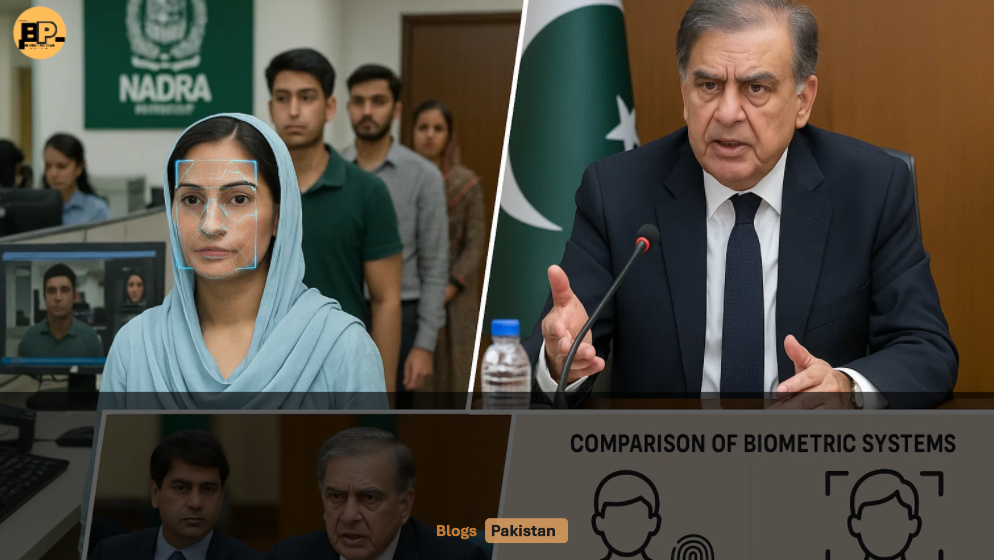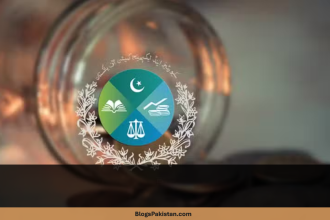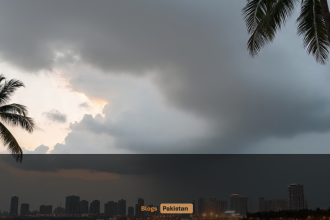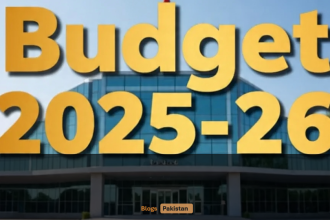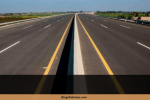Introduction
Imagine walking down the street, and suddenly, a camera recognizes your face in Pakistan—not just to tag you in a friend’s social media post, but to verify your identity for everything from mobile SIMs to pension claims. That’s right, folks! The Pakistan government is rolling out a nationwide facial recognition system by the end of 2025, and it’s set to change how citizens interact with the state.
From blocking illegal SIMs to catching fraudsters, this tech upgrade promises better security, fewer scams, and maybe even faster service delivery. But (and there’s always a but), it also raises questions about privacy, data misuse, and whether Big Brother is watching a little too closely.
Let’s dive into what this means for Pakistanis, how it works, and whether India should take notes (or run the other way).
Why Is Pakistan Introducing Facial Recognition?
1. Bye-Bye, Biometric Chaos!
Right now, multiple government departments and private companies store separate biometric databases—fingerprints, ID scans, you name it. The problem? This scattered approach makes data vulnerable to leaks, theft, and misuse.
NADRA’s new centralized facial recognition system aims to fix this by acting as the single source of truth for identity verification. No more juggling multiple databases—just one secure system to rule them all.
2. The War Against Fake SIMs & Fraud
Ever gotten a call from a scammer using a Pakistani number? Chances are, that SIM was registered with a fake or expired ID. The Interior Ministry has had enough and is blocking all SIMs linked to inactive CNICs—starting with IDs issued before 2017.
With facial recognition, telecom companies can instantly verify if the person buying a SIM is who they claim to be. Fraudsters, consider this your eviction notice!
3. Helping Those Who Struggle with Fingerprint Scans
Some people—like laborers, the elderly, or those with certain medical conditions—have faded or unreadable fingerprints. Facial recognition offers a smoother alternative, ensuring no one gets left behind in the digital age.
How Will This System Work?
Step 1: Your Face Becomes Your Password
NADRA’s system will use AI-powered facial matching to cross-check live images against its database. Need a new SIM? Just smile at the camera. Applying for a pension? Show your face instead of fumbling with fingerprint scans.
Step 2: Real-Time Fraud Detection
The system will flag mismatches—like if someone tries to use a dead person’s ID or a fake document. This could be a game-changer for banks, tax authorities, and law enforcement.
Step 3: Integration with Govt Services
From mobile registrations (PTA) to banking (SBP) and stock trading (SECP), facial recognition will soon be the standard for identity checks. Even the PAK ID app (7 million downloads and counting) now supports digital IDs and pension verifications.
Big Changes Coming to NADRA
1. Mega Centers & Expanded Services
Interior Minister Mohsin Naqvi just laid the foundation for a 10-story NADRA Mega Center in Islamabad, set to open by June 2026. Plus, 44 underserved regions (including all 31 union councils in Islamabad) will get NADRA offices by mid-2025.
2. New Regional Hubs
Multan, Sukkur, and Gwadar are getting new NADRA offices, meaning shorter queues and faster services for people outside major cities.
3. Digital Upgrades
- Iris scanning (for extra security)
- Updated family registration certificates (to prevent fraud)
- Federal arms license renewals via app (because even gun permits are going digital)
Pros & Cons: Is This a Win for Pakistan?
✅ The Good Stuff
- Fewer scams (Goodbye, fake SIMs and identity theft!)
- Faster services (No more waiting for hours at NADRA)
- Better accessibility (Facial recognition helps those with fingerprint issues)
❌ The Concerns
- Privacy risks (Who has access to your facial data?)
- Surveillance fears (Will the govt misuse this tech?)
- Technical glitches (What if the system misidentifies someone?)
What About India? Should They Adopt This Too?
India already uses Aadhaar-linked biometrics, but facial recognition is still limited to airports and some police systems. Pakistan’s move could push India to:
- Speed up its own facial recognition rollout
- Improve fraud detection in banking & telecom
- Debate privacy laws more fiercely
Final Verdict: A High-Tech Leap with Risks
Pakistan’s facial recognition system is a bold step into the future—one that could cut fraud, streamline services, and make life easier for millions. But without strong privacy laws, it could also become a tool for overreach.
Will this be a tech triumph or a privacy nightmare? Only time (and maybe a few court cases) will tell.
Facial Recognition Around the World – How Does Pakistan Compare?”
1. China: The Surveillance State Leader
China’s Social Credit System uses facial recognition to monitor citizens, affecting everything from bank loans to train tickets. Will Pakistan follow this model, or keep it strictly for ID verification?
2. India: Aadhaar’s Next Step?
India’s Aadhaar already uses fingerprints and iris scans. Could facial recognition be next? The Delhi Police already uses it for criminal tracking,
